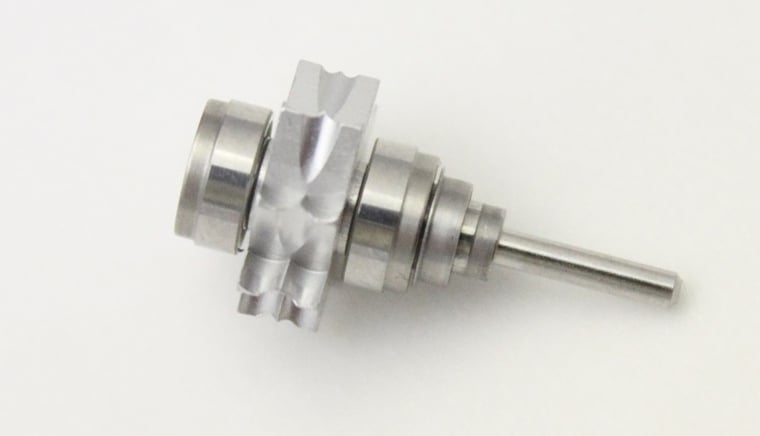
Just like a sports team, a dental turbine is only as good as its weakest link. All the components you use to make a dental turbine must be equally good for the turbine itself to output the lifespan you desire. When a repairman or company tries to cut corners by using cheaper components such as bearings, spindle combos, impellers, or o-rings, the resulting longevity output by the turbine created may not be acceptable for the end consumer or dentist. By knowing the componentry being used in every repair, you can make educated decisions on how long to warranty your product, how much to charge for your service, and when to expect return business from each customer.
Under proper use and care practices, we have found a dental turbine to last between 10-14 months on average. This means the majority of repairs we get in from dental practices have lasted within this range of time. However, there are outlying handpieces that come in within the 0-10-month range and others that have lasted between 14-36 months which leaves many unanswered question on why some turbines using the same componentry work better than others.
The early failures we have found occur for a variety of reasons all of which have to do with the care and usage of the handpieces. Most commonly, an office is failing to maintain the handpieces adequately lubing them before and after each sterilization cycle. When a handpiece is not lubricated, the retainers within the bearings dry up becoming brittle. Once returned to usage, these brittle retainers tend to crack or break due to the speed and torque put on them during normal operation. Once a bearing’s retainer is broken, there is nothing that can be done within the office to rejuvenate the handpiece’s functionality. It only takes one of the bearings cracking to render the handpiece broken even if the spindle, impeller, o-rings and remaining bearing are fully functional. The second most common reason for pre-mature handpiece failures is an inadequate number of handpieces in rotation. If an office does not have enough handpieces, there isn’t enough time to lubricate, sterilize, and wait for a handpiece to cool. It is common for the staff to pull handpieces from the sterilizer and return them to use while they are still hot, or manually cool the handpiece by running it under water or putting it into the ultrasonic. While these techniques seem to cool the handpiece to an appropriate temperature for use, the turbine that is actually needing the resting period does not cool down fully (and naturally). When the turbine is hot, the retainers within the bearings are slightly expanded not allowing the proper retention to guide the balls within the race of the bearing. At the stage when torque is applied to the bur, the balls and retainers become misaligned breaking or separating the retainer and balls from the bearing. When this happens, there is nothing that can be done in the office to rejuvenate the handpiece’s functionality. The symptoms you will see as a repair man when an office fails to lube their handpieces is a very dry, cracked retainer where otherwise all components look good/new. The symptoms you will see when a handpiece is being used hot is black or scorched bearings. The final symptom you may see is a white crystallization on the bearings which occurs when handpieces are wiped down with cavi-wipes or put into the ultrasonic cleaner.
 (Broken with poor maintenance)
(Broken with poor maintenance)
When a handpiece comes back within the 10-14-month range, this means that the office cares for their handpieces adequately, lubricates properly, and has the correct number of total handpieces in rotation. This is your ideal customer, but it is important to note that what may be working now may not work forever. Dental offices, like all businesses, have a constant turn-over of employees and personal. With turnover comes changes of maintenance schedules and practices. It is important to realize when an office in this category defaults to premature failures so you can investigate what has changed in their maintenance routines causing these failures. Not investigating and finding why a single office is having problems with longevity will look negatively on you in the long-term resulting in an angry or loss of customer.
On the high end of turbine longevity, 14+ months, offices have been known to maintain their handpieces with incredible efficiency. Most offices that fall into this category have lubrication and cleaning machines that take the guesswork out of handpiece care. Each handpiece receives the correct amount of oil and is flushed pre and post sterilization. These offices also have an adequate or more than adequate number of handpieces in rotation and make sure to maintain these correct practices with consistency and long-term.
In conclusion, it is important to know the components you’re using and speak with your offices to make sure they are being maintained properly. In the case that your customers fall within the first category of turbine failure, it is essential to talk with the office, review the recommended maintenance procedures, and follow-up to make sure each handpiece is being cared for properly before, during and after every use.
 (Broken with proper maintenance – clean and intact)
(Broken with proper maintenance – clean and intact)
